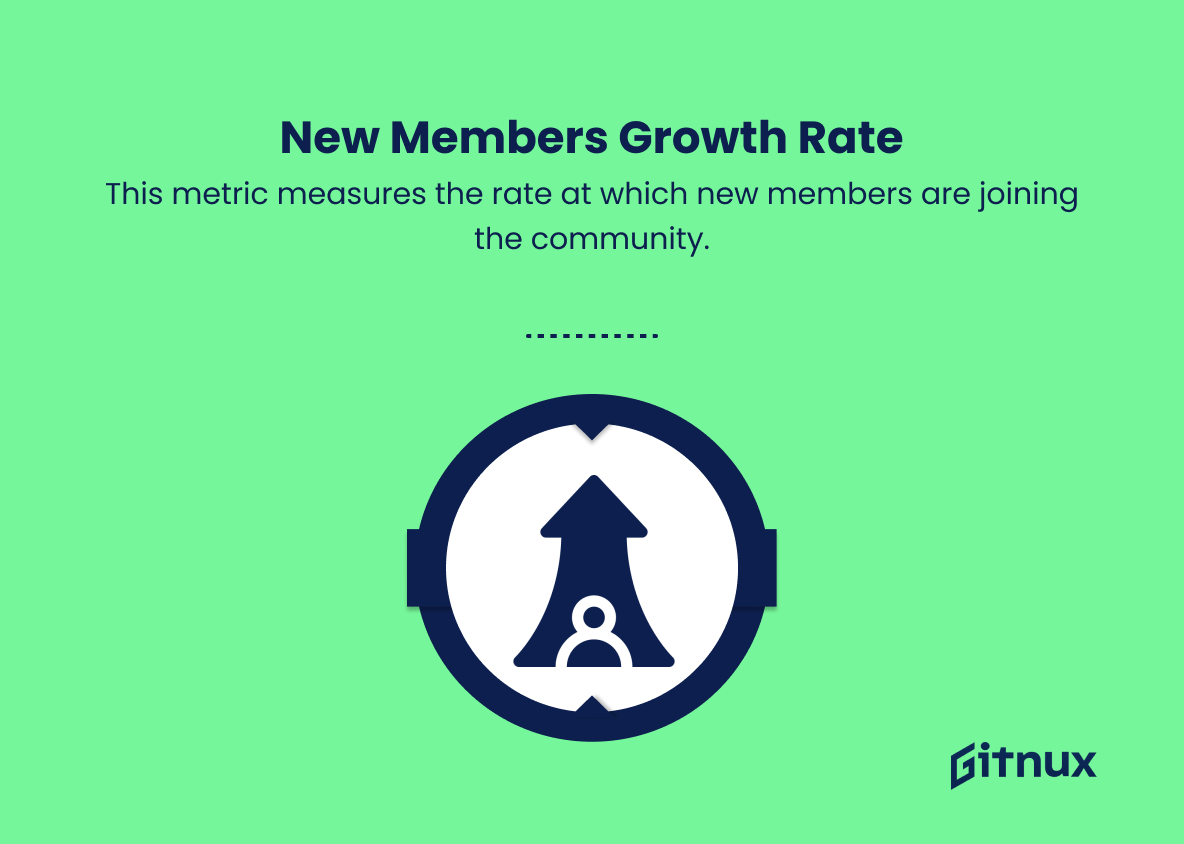In today’s digital age, community engagement has emerged as a crucial component in the growth and success of companies, organizations, and initiatives. As businesses and organizations strive to create a strong online presence, measuring the success of their community engagement strategies becomes vital. This allows them to evaluate progress, assess effectiveness and optimize their approach for optimum results. In this blog post, we will delve into the essential Community Engagement Metrics that every organization must track and analyze to ensure that they are harnessing the full potential of their online communities, while fostering a culture of collaboration, innovation, and shared success.
Community Engagement Metrics You Should Know
1. Number of active members
This metric tracks the number of people who actively participate in the community by posting, commenting, or interacting with the content.
2. New members growth rate
This metric measures the rate at which new members are joining the community. A consistently increasing growth rate indicates a healthy and engaging community.
3. Member retention rate
This metric refers to the percentage of members who continue to participate in the community over time. A higher retention rate indicates a loyal and engaged audience.
4. Participation rate
This is the ratio of active members to the total number of registered members in the community. A higher participation rate indicates a more engaged community.
5. Average time spent in the community
This metric determines the average amount of time members spend on the community platform. The longer the time, the more engaged the members are.
6. Social media shares
This metric measures the number of times your community’s content is shared across various social media platforms. A higher number of shares indicates greater community engagement.
7. Likes, comments, and reactions
These metrics track the number of likes, comments, and reactions on the content shared in the community. These are indicators of interest and involvement from community members.
8. Number of user-generated content
This refers to the volume of content created by community members, such as forum posts, blog articles, or social media posts. The more user-generated content, the more active and engaged the community is.
9. Number of event attendees
This metric counts the number of attendees at community events such as meetups, webinars, or workshops. A higher turnout indicates stronger community engagement.
10. Conversion rate
This metric measures the percentage of community members who take a desired action, such as registering for a webinar, purchasing a product, or signing up for a newsletter. Higher conversion rates indicate a more engaged and valuable community.
11. Volunteer participation
This metric tracks the number of members who actively volunteer their time and expertise to support the community, such as by moderating forums, answering questions, or providing technical assistance. A higher number of volunteers indicates a more engaged community.
12. Community satisfaction rate
This is the percentage of community members who express satisfaction with the community’s content, resources, and overall experience. Higher satisfaction rates indicate a more engaged and happy community.
13. Churn rate
This metric calculates the percentage of members who leave the community during a specified period. A lower churn rate indicates better member retention and engagement.
14. Referral rate
This metric measures the number of new members who joined the community through direct referrals from existing members. A higher referral rate shows the strength of the community and member satisfaction.
Community Engagement Metrics Explained
Community engagement metrics play a crucial role in understanding, evaluating, and refining the overall health and effectiveness of a community. They help gauge the level of activity, growth, loyalty, and satisfaction among community members. Active members, new member growth rate, and member retention rate signify engagement, growth, and sustained interest in the community. Participation rate, time spent in the community, and social media shares reflect the extent to which members are engaged and connected with the content. Metrics such as likes, comments, reactions, user-generated content, event attendees, and volunteer participation demonstrate members’ involvement and investment in the community.
Conversion rates, satisfaction rates, churn rates, and referral rates provide valuable insights into the success and impact of the community, helping organizations constantly refine their strategies and grow as a thriving, engaged, and valuable community.
Conclusion
In summary, community engagement metrics play a vital role in understanding the impact and effectiveness of our outreach efforts. By analyzing the data from various touchpoints, we gain insights into audience participation, sentiments, and behaviors, which ultimately contribute to the success of community-driven initiatives. As we move forward, it is essential to invest in the right tools and consistently refine our strategies, remembering that authentic communication and genuine relationships are the cornerstones of building a strong, united community. The potential for growth and change lies not only in the numbers but also in the hearts and minds of the people we seek to engage, and it is our responsibility to translate these metrics into meaningful actions that benefit our community at large.















